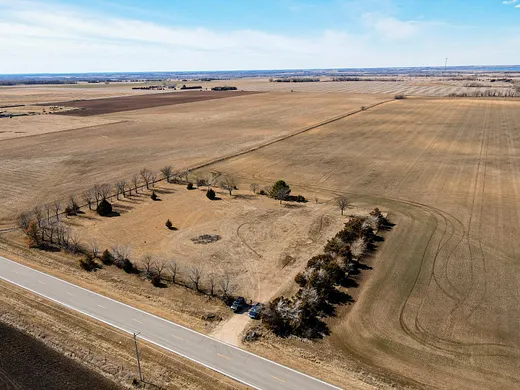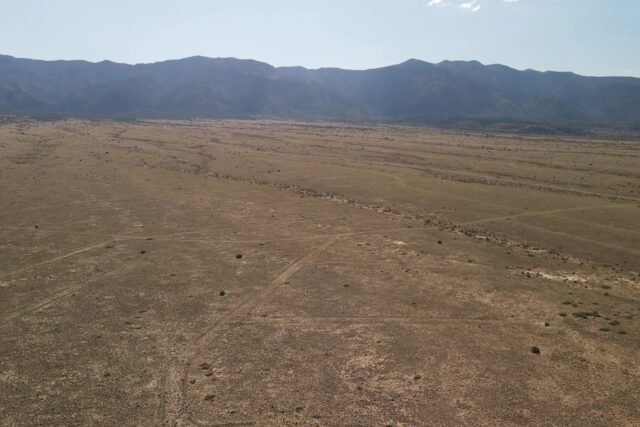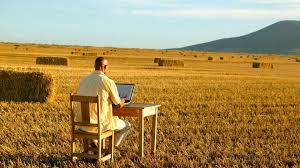
Buying raw land in the US can be an exciting opportunity, whether you’re looking to build your dream home, start a farm, or invest for the future. However, it’s a process that comes with its own set of challenges. Unlike purchasing a developed property, buying raw land requires you to consider zoning laws, utilities, and land use restrictions, all of which can vary depending on where you’re buying. In this guide, we’ll walk you through everything you need to know about purchasing raw land in the US, from understanding what raw land is to navigating the buying process.
What is Raw Land?
Raw land is any piece of land that has not been developed or improved. This means there are no buildings, roads, or utilities such as water, electricity, or sewage connections. Raw land can be found in rural, suburban, or even urban areas, but it’s often more common in less populated or remote regions.
In the US, raw land is often bought for:
– Residential building – Building a house or subdividing the land into lots for future homes.
– Agriculture – Growing crops, raising livestock, or other farming activities.
– Recreational use – Using the land for hunting, camping, or other outdoor activities.
– Commercial or industrial development – Building retail stores, factories, or offices.
– Investment – Buying land with the expectation that its value will increase over time.
Now that you understand what raw land is, let’s dive into the steps involved in buying it.
Decide on the Purpose of the Land
The first and most important step when buying raw land is to determine what you plan to do with it. Are you planning to build a home right away, or are you purchasing the land as a long-term investment? Defining your goals will help you choose the right type of land and ensure it meets your needs.
Common Purposes for Raw Land in the US:
– Building a home – You’ll need land that’s zoned for residential use.
– Farming – You’ll need land with good soil, water access, and possibly agricultural zoning.
– Outdoor recreation – If you want to use the land for hunting, camping, or fishing, you might prefer a rural location.
– Investment – If you’re buying land as an investment, look for areas where land values are likely to rise due to nearby development or growth.
Once you know your purpose, you can begin narrowing down your search.
-
Set a Budget and Explore Financing Options
The cost of raw land in the US varies greatly depending on location, size, and whether it’s in a rural or urban area. Setting a budget is critical because, beyond the purchase price, there are additional costs like development, permits, and potential taxes.
Key Costs to Consider:
– Land Purchase Price – This is the price for the raw land itself. In rural areas, land can be relatively inexpensive, but in suburban or developing regions, prices can rise quickly.
– Development Costs – If the land doesn’t have utilities like water, electricity, or roads, you’ll need to factor in the cost of adding them. This can be costly depending on the land’s location.
– Property Taxes – Taxes on raw land vary by state and county. Check local rates to estimate what you’ll pay annually.
– Land Surveys and Tests – You’ll need to hire professionals to conduct surveys and tests to ensure the land is suitable for building or other uses.
Financing Raw Land in the US:
Unlike traditional home purchases, raw land is often seen as a higher risk by lenders, so getting financing can be tricky. Here are some common ways to finance raw land:
– Land Loans – Some banks and credit unions offer specific loans for raw land purchases. These loans usually require higher down payments and come with shorter terms than traditional mortgages.
– Seller Financing – In some cases, the seller might be willing to finance the purchase, meaning you’ll make payments directly to them rather than through a bank.
– Home Equity Loan – If you already own a home, you might be able to take out a home equity loan and use that money to purchase the land.
-
Check Zoning Laws and Land Use Regulations
In the US, every piece of land is governed by zoning laws, which dictate how the land can be used. Zoning classifications include residential, agricultural, commercial, and industrial uses. Before purchasing land, it’s essential to check local zoning laws to ensure that the land can be used for your intended purpose.
Zoning and Restrictions to Check:
– Zoning Classifications – Check whether the land is zoned for residential, agricultural, or commercial use. If it’s not zoned for what you intend, you’ll need to apply for a zoning change, which is not guaranteed.
– Land Use Restrictions – Some areas have restrictions on what you can do with the land, including environmental protections, building height limits, or other regulations.
– Easements – An easement is a legal right for someone else to use part of your land, such as a utility company needing access to power lines. Easements can limit how you use the land.
You can find out about zoning and land use regulations by contacting the planning department in the county where the land is located.
-
Conduct a Thorough Due Diligence Process
Once you’ve identified a piece of land, the next step is to do your due diligence. This means carefully investigating the property to uncover any issues that could affect your plans.
What to Investigate:
– Land Survey – Hire a surveyor to map out the exact boundaries of the property and confirm there are no disputes with neighbors or encroachments on the land.
– Soil Testing – If you’re planning to build, you’ll need to make sure the soil is stable enough for construction. In some areas, certain soil types or the presence of wetlands can make building difficult or impossible.
– Topography and Flood Zones – Check the land’s topography (the shape of the land) to ensure it’s suitable for building. You should also check if the land is in a flood zone, as this can affect building costs and insurance rates.
– Environmental Concerns – In some areas, there may be environmental regulations that restrict development, especially if the land contains protected species or wetlands.

-
Consider Utilities and Access to Infrastructure
One of the biggest challenges with raw land is that it often lacks basic utilities like water, electricity, and sewer connections. Before buying, make sure you understand how to access these services and how much it will cost to install them.
Utilities to Consider:
– Water – If the land doesn’t have access to city water, you may need to drill a well, which can be expensive. Be sure to test the water quality and quantity if a well is necessary.
– Sewage – In areas without sewer connections, you’ll need to install a septic system. Make sure the land is suitable for this.
– Electricity – Check the proximity to power lines. If the nearest lines are far away, you may need to pay to extend them to your property.
– Road Access – If the land doesn’t have direct road access, you may need to build a road or negotiate an easement with neighboring properties.
-
Work with the Right Professionals
Buying raw land is a more complex process than buying an already developed property. To make sure everything goes smoothly, you’ll need to work with professionals who specialize in land transactions.
Essential Professionals to Hire:
– Real Estate Agent Specializing in Land – An agent who understands the raw land market can help you find the right property and guide you through the buying process. Here in RAMGEO properties we have a great team to healp you in this process.
– Surveyor – A professional surveyor will confirm the property boundaries and ensure there are no disputes with neighbors.
– Land Use Attorney – A lawyer who specializes in land use can help you navigate zoning regulations, easements, and any other legal issues.
– Contractor or Builder – If you plan to build, it’s important to consult with a contractor early on to understand construction costs and feasibility.
-
Close the Deal
Once you’ve done your research, confirmed that the land suits your needs, and lined up financing, you’re ready to close the deal. The closing process for raw land is similar to buying a home but may involve additional steps.
Key Steps in Closing:
– Title Search and Insurance – Make sure the title is clear and that there are no claims or disputes on the property. Title insurance protects you from potential future issues.
– Review Easements and Restrictions – Ensure you fully understand any easements, restrictions, or zoning laws that apply to the land.
– Final Walkthrough – Before closing, do a final visit to the property to ensure it meets your expectations and there have been no changes.
Buying raw land in the US offers incredible opportunities, but it also comes with unique challenges. From understanding zoning laws and financing options to ensuring the land is buildable, careful planning and research are essential. By following these steps and working with the right professionals, you can make a smart investment in raw land and turn your vision into reality.




Leave a Reply